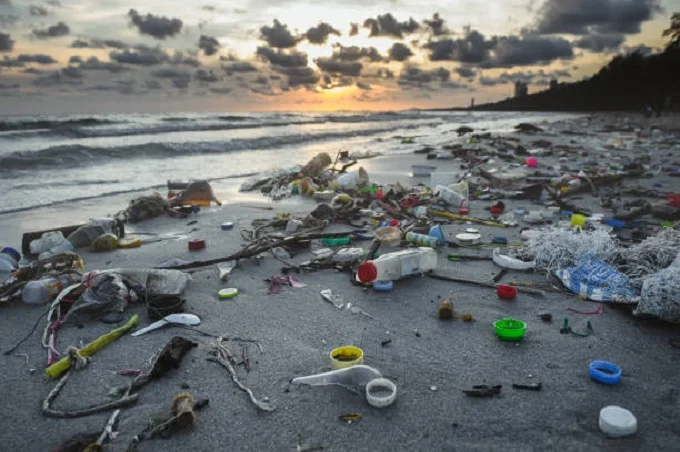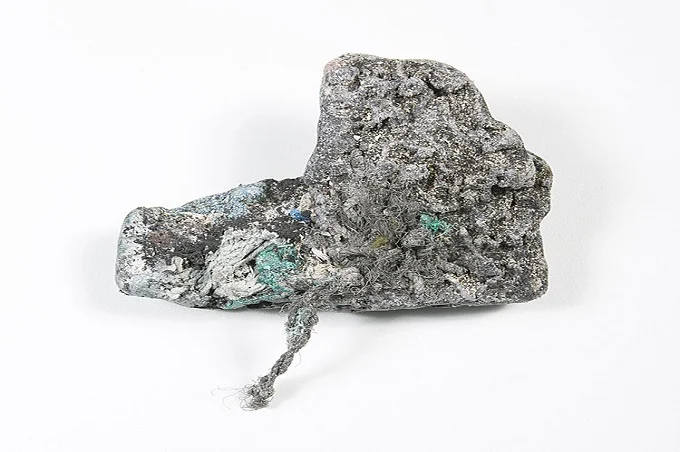How does plastic pollution affect the environment

There are about 8.3 billion tonnes of plastic in the world today. Of these, 6.3 billion tonnes are rubbish, floating in the oceans as huge islands, lying in landfills tens of meters above the surface, etc.
To us, ordinary people, who are not particularly ecologically aware, the effect of plastic pollution seems exaggerated because the only things we notice are the plastic containers and bags scattered around rubbish bins. However, apart from the obvious types of plastic pollution in our environment, many more are hidden from view. Here’s how plastic pollution is invisibly affecting the environment.
Plastic is found in the atmosphere
We are no longer surprised by huge piles of plastic lying on kilometer-long landfills or floating in the oceans. It has already become commonplace, and people don’t care about it, but they also don’t even notice such pollution.
But what you, and many other people, don’t know about is the presence of plastic in our planet’s atmosphere. Scientists studying precipitation have found particles of microplastic that get into the clouds along with the evaporating moisture. Microplastics are tiny particles of plastic that have been decomposed by the sun in the water.
Microplastics are also released into the atmosphere from road dust picked up by vehicles while driving. This means we are literally breathing in plastic right now.

Plastic is even found in food
Researchers studied foods such as potatoes, lettuces, pears, and so on and found that some of them contained around 200,000 particles of microplastics per gram. But how does it get there? Very simply – with sediment, which we found out contains plastic too. According to the researchers, most microplastics are found in fruit, less in vegetables. And if it’s in these foods, it’s also in meat. So even if it says “farm-grown, organic, non-GMO” on the package, there is a good chance that the product also contains microplastics.
Plastic is found in agricultural products, meat, fish, and other seafood. And the impact on these products is much more noticeable than on produce grown on land. It is estimated that seafood lovers can get more than 10,000 particles of microplastics a year. The researchers note that the number of fish containing microplastics is increasing dramatically. Whereas from 2010 to 2013, they found microplastics in just 15% of fish, by the end of the decade, that figure had risen to 33%.
Males are becoming less masculine
Environmentalists worldwide sound the alarm about the effects of pollution on creatures’ hormones. In a study of several rivers in the US and Canada, scientists have concluded that plastic pollution has impaired the fertility of fish and other aquatic creatures. The fact is that most plastic containers and other products have long contained bisphenol A.
This substance is associated with diabetes, cancer, and other serious diseases and the feminization of males, as bisphenol A is structurally similar to estrogen, the female hormone. Phthalates, also contained in plastics, have the same effect on the male body. They mimic the structure of estrogen and weaken the effects of testosterone.
Experiments on mice showed that exposure to bisphenol A reduced test0sterone, the male h0rmone responsible for fertility and male characteristics in general.
Research is still ongoing to confirm or disprove the effects of bisphenol A and phthalates on humans in terms of fertility. Still, we can already say that plastic pollution reduces populations of fish and other aquatic creatures, potentially leading to a decline in those resources and starvation.
To get the latest stories, install our app here
Plastic is slowly settling into human organs
If it doesn’t scare you that we are constantly eating and inhaling plastic, we think you may be at least a little concerned that some of your organs are already made of plastic. Don’t be too quick to rejoice in thinking you are now some sort of cyborg; these are not useful improvements.
Studies of cadavers have shown that the average body is full of microplastic. It is found in the stomach and all organs, including the liver and kidneys, because the body tries to eliminate microplastic, but it does not always succeed, and these particles clog small vessels.
Moreover, microplastics are found even in newborn babies, including the placenta, which is supposed to be completely sterile. Some microplastic particles can be as small as 10 microns, allowing them to travel safely through the bloodstream.
Plastic can cause obesity
The problem with plastic is not only that it shortens people’s life expectancy but that it makes us all fatter than we need to be. Whatever proponents of the unhealthy offshoot of the generally useful bodybuilding movement may say, there is nothing bodybuilding about obesity. It is a condition that is entirely disadvantageous and significantly reduces the quality and length of life, causing various illnesses.
And according to researchers, one of the factors leading to the rapid increase in the number of overweight people is plastic, or more specifically, the substances used to create it. A study of more than 600 chemical compounds present in various types of plastic has identified at least 11 of those that impair metabolism. These substances impair the body’s ability to metabolize fat, leading to its deposition and subsequent obesity.
Plastic is forming a new kind of rock

It seems to us that all these piles of rubbish are made up of disparate parts and that if they were picked up and recycled, the planet would be cleaner. That is not the case. Researchers note that plastic is forming a new kind of artificial stone that is formed under natural conditions without human intervention. This material is called plastiglomerate and, unlike conventional plastic, it is stronger and more durable and therefore takes longer to decompose.
It is not yet known how plastiglomerate will affect the planet and humanity in the future, but we can already see new structures forming from rubbish.




